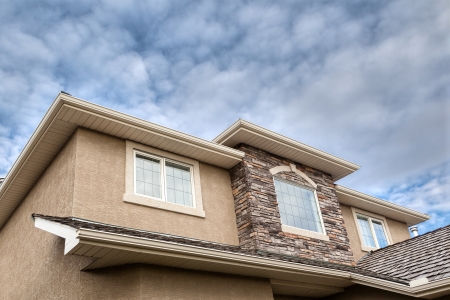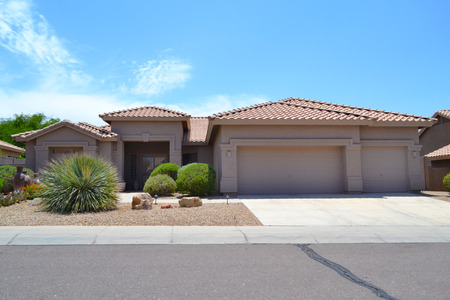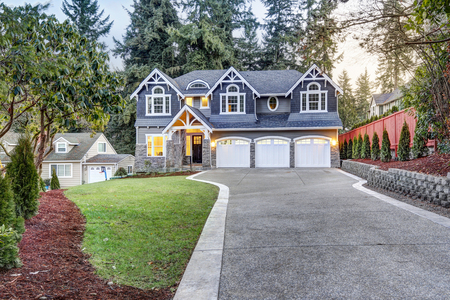
As the days grow shorter and the air turns crisp, there’s no better time to embrace the spooky spirit of Halloween. For many homeowners, Halloween is a chance to showcase their creativity and transform their house into a frightfully fun spectacle. Whether you’re going for eerie elegance or family-friendly fun, decorating the exterior of your home can turn it into a trick-or-treat destination that’s both welcoming and delightfully spooky.
In this post, we’ll explore fun and creative tips for decorating your home’s exterior for Halloween. From yard displays and porch decorations to safety tips for ensuring a secure environment for trick-or-treaters, we’ll help you create a Halloween display that’s sure to thrill your visitors.
1. Front Yard Displays: Make a Bold First Impression
The front yard is the first thing people see when approaching your home, so it’s the perfect canvas to set the Halloween scene. Whether you want to go all-out with an intricate setup or keep things simple, here are a few ideas to make your yard stand out:
Create a Graveyard Scene
One of the most iconic Halloween yard displays is a spooky graveyard. You can buy tombstone decorations or create your own with cardboard or foam, painted in gray and black for a weathered effect. Scatter the gravestones across your yard and add in some eerie details like skeleton hands emerging from the ground, creepy fog using a fog machine, or LED-lit ghosts floating among the headstones. To make the scene more interactive, consider adding motion-sensor props that startle passersby when they walk near!
Incorporate Halloween-Themed Lawn Inflatables
If you’re looking for a quick, impactful way to decorate your front yard, consider using Halloween-themed inflatables. These decorations come in a wide variety of characters, from friendly pumpkins and ghosts to more sinister witches and ghouls. Inflatables are a fantastic option for homeowners who want a large, eye-catching display without too much effort.
Add a “Haunted Forest”
To give your yard a more mysterious feel, create a haunted forest with gnarled, artificial trees, or wrap real trees and bushes with eerie, glowing lights. You can add creepy creatures such as spiders, bats, and crows nestled in the branches. Drape faux spider webs over bushes and trees to give everything a haunted, abandoned look. For extra atmosphere, consider adding ground-level fog, which you can create with dry ice or a fog machine, to create a misty, otherworldly effect.
Use Jack-O’-Lanterns to Light the Way
Carved pumpkins are Halloween staples, and lining your yard with glowing jack-o’-lanterns is a classic way to decorate. You can go for the traditional candle-lit pumpkins or use battery-operated LED lights for a safer option. If carving pumpkins isn’t your thing, you can still embrace the spirit with painted pumpkins or foam versions that are easier to work with and last longer throughout the season.
2. Porch Decorations: Setting the Stage for Spookiness
The front porch is where the magic happens on Halloween night—it’s where you’ll greet trick-or-treaters, and it’s also a key area for creating an inviting yet spooky atmosphere. Here are some creative ideas to decorate your porch:
Transform Your Door into a Spooky Focal Point
Your front door can be the centerpiece of your porch decorations. Try transforming it into something eerie with adhesive decals or DIY decorations. You can make it look like a haunted entrance by adding faux cobwebs, tattered curtains, or even a “Do Not Enter” sign. Alternatively, you can go with a more humorous approach and turn your door into a giant monster face, using oversized googly eyes and a toothy mouth made from paper or foam.
Hang Creepy Decorations from Above
To add vertical interest, hang spooky decorations from your porch ceiling or roof. Think hanging ghosts made from white fabric or cheesecloth, large plastic spiders suspended on faux webs, or even bats strung up on invisible fishing lines. These dangling decorations can sway in the breeze, adding a chilling effect to your setup.
Create a Creepy Wreath
Wreaths aren’t just for Christmas! A Halloween wreath can be a great way to add a touch of spooky charm to your front door. You can buy or make your own wreath with Halloween-themed materials like black tulle, plastic spiders, and faux skulls. Add a pop of color with orange and purple accents, or stick with an all-black theme for a more gothic vibe.
Pumpkins Galore
Whether they’re carved, painted, or artificial, pumpkins are a must-have on any Halloween porch. Use a mix of sizes and colors to create visual interest—stack them on either side of the door, line your porch steps with them, or arrange them in clusters. For a modern take, you could spray-paint your pumpkins in metallic shades or bold colors like black, silver, or white.
Add Mood Lighting
Lighting is essential to set the mood on Halloween night. Use string lights in Halloween colors—orange, purple, or green—to illuminate your porch. You can also use lanterns, both real or faux, to create a spooky glow. Flameless candles are another great option for adding a warm, flickering effect without the worry of open flames.
3. Making Your Home Welcoming (and Spooky!) for Trick-or-Treaters
While you want your home to look spooky, it’s important to strike the right balance so it’s still welcoming to trick-or-treaters. Here are some ways to make sure your display is just scary enough without going overboard:
Create a Clear, Safe Pathway
Trick-or-treaters of all ages will be navigating your yard and porch, so it’s crucial to ensure that the pathway leading to your front door is well-lit and free from hazards. Use LED lights or solar-powered pathway lights to illuminate the walkway. You can also incorporate Halloween-themed lighting like glowing pumpkins or lanterns to guide the way. Be mindful of any tripping hazards like extension cords, decorations that hang too low, or objects scattered across the ground.
Provide a Warm Welcome with Friendly Decor
Not all Halloween decor has to be scary—especially if you expect younger children. Consider adding some friendly elements, like smiling jack-o’-lanterns, happy ghosts, or cute witches, to balance out the more spooky decorations. Friendly signs that say “Happy Halloween” or “Welcome Trick-or-Treaters” can help signal that your home is open for candy seekers.
Offer a Candy Table or Station
If you have a lot of decorations on your porch or yard, it might not be clear to trick-or-treaters where to knock or grab candy. Make it easier by setting up a designated candy table or station. Decorate a small table with Halloween-themed tablecloths and place bowls of candy, along with some fun props like fake spiders or skeleton hands holding the candy. This also allows you to maintain some distance and avoid crowding on your porch.
4. Halloween Safety Tips for a Spooktacular Night
Safety is always important, especially when your yard and home are bustling with trick-or-treaters. Here are some tips to ensure that your Halloween decorations don’t pose any hazards:
Light Up Pathways
While it’s fun to have dark, spooky corners in your yard, it’s essential to keep walkways and stairs well-lit to prevent trips and falls. Use battery-powered or solar lights to illuminate paths, and avoid running extension cords across areas where people will be walking. Consider using ground-level lighting, such as LED spotlights, to highlight steps or uneven surfaces.
Opt for Flameless Candles
While traditional candles inside jack-o’-lanterns are classic, they can be dangerous if left unattended. Instead, use flameless candles or LED lights inside pumpkins, lanterns, or other decorations. These offer the same flickering effect without the fire risk.
Keep Decorations Off Walkways
Make sure that any large decorations, cords, or props are kept away from walkways, steps, and entryways. This prevents tripping hazards, especially in low-light conditions. If you have a fog machine, position it where it won’t obscure stairs or obstacles.
Check Electrical Outlets
If you’re using multiple lights, inflatables, or sound effects, ensure that your electrical outlets are not overloaded. Use outdoor-rated extension cords and power strips, and keep them out of the way of foot traffic to avoid accidents.
Halloween is the perfect time to get creative and have fun with decorating the exterior of your home. Whether you’re aiming for spooky, fun, or somewhere in between, these tips can help you create a memorable display that will delight trick-or-treaters and neighbors alike. By focusing on yard displays, porch decorations, and safety precautions, you can create a Halloween experience that’s both welcoming and wonderfully eerie. Embrace the spirit of the season and transform your home into a spooktacular showstopper! Pinterest is a great place to find more great suggestions for the holiday.




